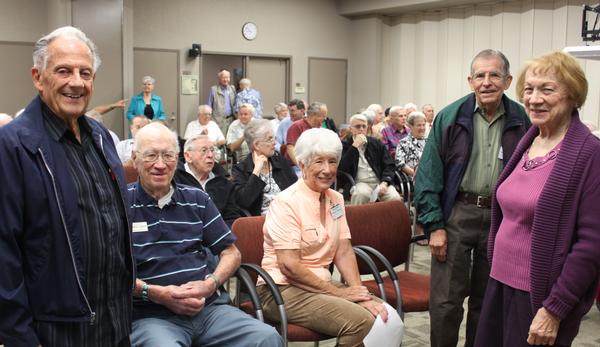New on the blogroll: the Squared Away blog by the Center for Retirement Research at Boston College, where they posted a pie chart on retirement spending, with, as a surprising “headline” item, the fact that retirees ages 75 – 84 spend 42% of their income on housing — much more than you’d initially expect when they should all have, in principle, paid off their mortgages.
So I followed the link. And the numbers are interesting in a number of ways.
These are actually surveys of household expenditures, based on surveys of households intended to reflect a wide cross-section of Americans, differentiated by the age of the oldest household member. Unfortunately, the data doesn’t differentiate between singles (widows/widowers) and married couples, and it makes it difficult to assess the extent to which the changing patterns at older ages is due to, in fact, different consumption levels, vs. an increasing proportion of single-person households.
The survey actually includes individuals as young as 50, and this youngest “pre-retirement/early retirement” group, naturally, has the highest expenditures — and what’s more, the survey indicates that they spend significantly less than they earn. This is only shown as a graph, not with the data points, but, apparently, the mean household income for a 55 year old is about $95,000, and expenditures total about $50,000 — which would imply that near-retirees are saving pretty heavily. In part, this is explicable by the fact that taxes (at least, income taxes, anyway) aren’t included as an “expenditure.” Perhaps this is also a quirky impact of using the mean rather than median. It’s odd in general that, except for the very oldest age in the survey, age 90, everyone earns more than they spend, at the mean. I suppose pensions and Social Security are counted as “income,” as well as IRA distributions, but shouldn’t, on average, retirees be spending down non-tax-deferred savings as well?
Anyway, I can’t account for that, so let’s look at the basic data.
Not surprisingly, expenditures decline with age. (They also, in general, declined since 2003, especially for the youngest group, which dropped from 46K to 39K, ) At median, expenditures decline from $38,642 for the 50 – 64 year olds, to only $22,263 for the 85+ group.
And the “home” category of expenditures is as high as 47% of expenditures for the younger group, dropping to 43/42/44% for the older categories, and, in absolute terms, dropping from $16,398 to a little more than half, at $8,791. How bad is this? The rule of thumb is always that housing is supposed to be 33% of income, right? This figure is higher — but it also includes all sorts of “home-related” expenditures: mortgages, property taxes, homeowner’s or renter’s insurance, rent, utilities, home repairs, home furnishings, housecleaning supplies, housekeeping and laundry services, gardening and yard supplies, gardening and yard supplies, and gardening and yard services.
So it’s actually pretty easy to see how people could be spending this much on “home.” This includes furniture, for crying out loud! And, for the older groups, even after the mortgage is paid off, a senior in their single-family home (and you know what a big fan I am of seniors staying in their homes!) is going to be paying taxes and utilities, and have some new expenses: a lawn service, snow removal service, and eventually a housekeeper.
What’s odd, though, is that, as high as housing is, as a percent of expenditures, food expenditures are surprisingly low. Here’s a table, converted into monthly expenditures:
Age 50-64 65-74 75-84 85+
Household $336 $331 $269 $179
Spending
“Individual” $224 $221 $179 $120
Spending*
* Assuming, as a wild guess, an average of 1.5 people in the household
So what do you make of this?
For comparison, the monthly maximum food stamp benefit, based on the USDA “thrifty” food plan, is $194 per month for a single-person household, and $146 for an “additional” person. Which means that the per-household expenditures for the oldest group is, at median, less than a single person’s basic food needs, and for the second oldest group, assuming a certain number of two-person households, likely above this level as well.
To be sure, “food” counts only food purchased at home, not dining out, which is included in “entertainment” – but I wouldn’t want to try to guess how many meals dined-out the entertainment spending includes.
You want another surprise? Out-of-pocket medical costs. If the youngest group includes a mix of still-employeds and early retirees, you’d expect a significant number of them to be footing their own medical bills, and benefit substantially from Medicare kicking in at age 65. But that’s not actually the case. Age 50 – 64 spent, at median $2,338 in out-of-pocket healthcare spending, or, at mean, $4,176. Age 65 – 74? It increased to $3,104/$4,383. Yes, this is an aging issue, but I would have expected a decrease due to Medicare eligibility. And other other odd thing is that, sure, the mean expenditure increases to $6,603 for the 85+s, but the median actually drops from $3,109 to $2,814. Go figure.
Of course, what I’d really like to see is these values at various percentiles. How much difference is there in the out-of-pocket healthcare spending, say, of a low-earner vs. a high earner?
But that’s as much as I can do with this study. Your turn. Thoughts?












